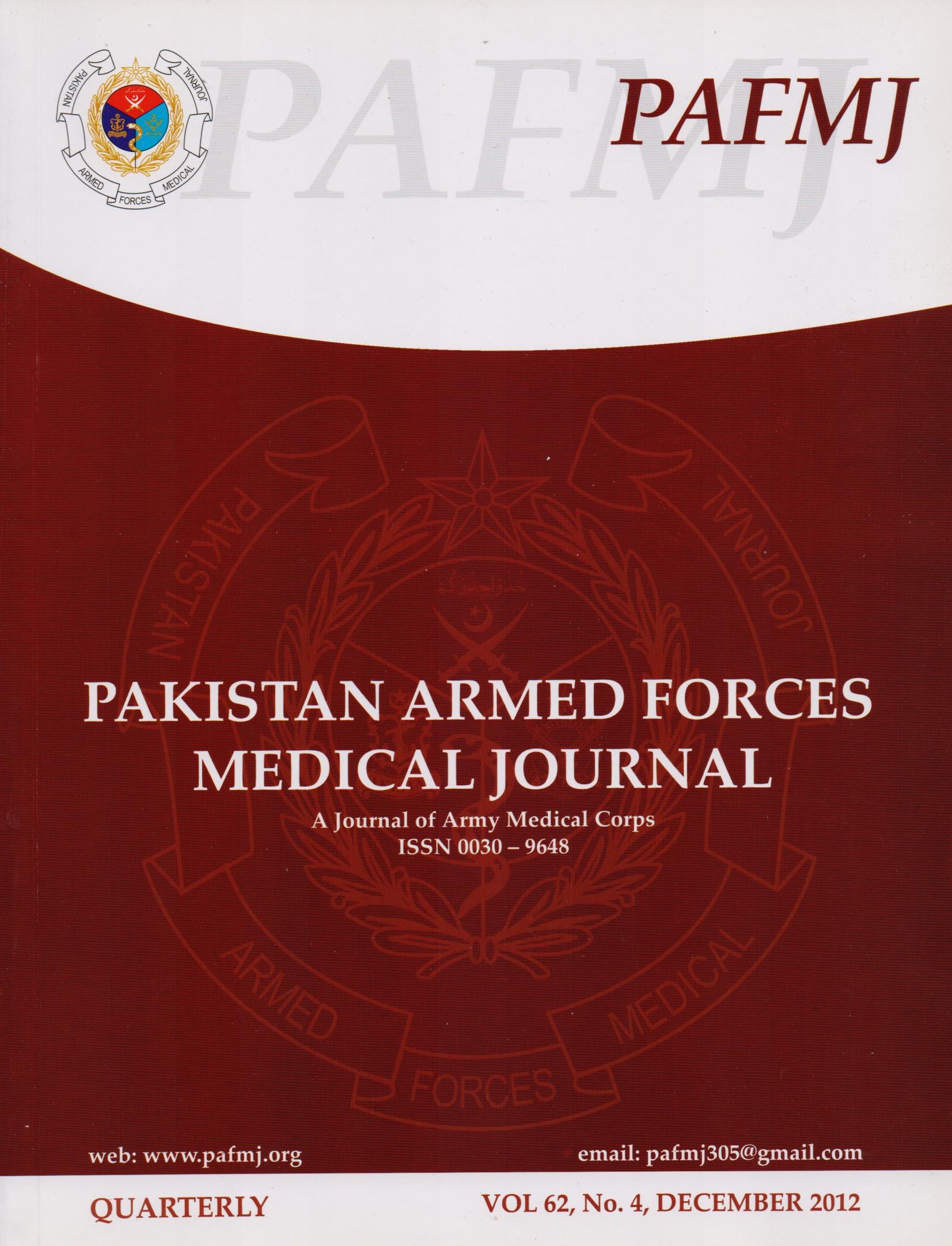MANAGEMENT OF PRESSURE SORES AT COMBINED MILITARY HOSPITAL RAWALPINDI
Management of Pressure Sores
Keywords:
Musculocutanoeus flaps, Paraplegia, Pressure sore.Abstract
Objective: To present the results of surgical management for pressure sores in patients with paraplegia.
Study Design: Descriptive Study.
Place and Duration of Study: Department of Plastic Surgery, Combined Military Hospital Rawalpindi, between Jan 2009 and Apr 2011
Patients and Methods: Patients who reported at our unit for their non healing grade III and IV pressure ulcers due to paraplegia during the study duration were included in the study. All patients were assessed for duration of illness and evaluated for generalized nutritional and neurological status. The pressure ulcers and surrounding skin and subcutaneous tissue were examined in detail for planning of the flap coverage. In most of the patients musculocutaneous flaps were done.
Results: Sixty six flaps were done on 60 patients. Fifty six patients were paraplegic due to spinal cord injury, 2 patients had pressure sore post cardiac surgery, 1 patient had GB syndrome and 1 patient had stroke. Among spinal cord injury patients 52 were earthquake victims 2 had firearm injury and 2 had road traffic accident. For 32 ischial pressure sores 28 V-Y hamstring musculocutaneous flaps and 4 gluteal thigh flaps were done. For 26 sacral pressure sores 14 gluteus maximus musculocutaneous rotational flaps, 05 gluteus maximus musculocutaneous V-Y advancement flaps and 07 gluteal fasciocutaneous rotational flaps were done. For 08 trochanteric pressure sores 08 tensor fascia lata musculocutaneous flaps were done. Minor complications in 18% of the flaps were seen. No recurrence was seen.
Conclusion: Once pressure sores develop timely intervention and an appropriate flap with good post operative care yield satisfactory results











